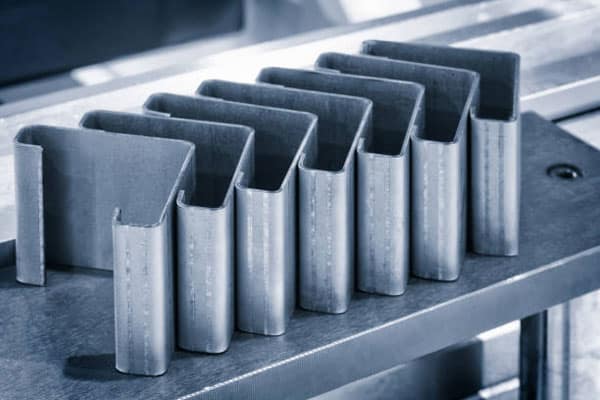Look around you—that sleek computer case, the sturdy cabinet in your kitchen, even parts of your car’s body. They all share a typical origin story: sheet metal fabrication. This remarkably versatile manufacturing approach transforms flat metal sheets into functional, beautiful components that combine strength with surprisingly light weight. Whether designing a simple bracket or an intricate electronic enclosure, understanding the magic behind sheet metal fabrication can help you create products that excel in form and function.
Choosing the Perfect Metal Partner
Every great sheet metal fabrication project begins with selecting the right material—like choosing the perfect dance partner for a complex choreography. Mild steel remains the popular prom king of sheet metal fabrication materials, thanks to its willingness to be formed, welded, and finished without complaining (and its wallet-friendly price tag doesn’t hurt either). When corrosion threatens to rain on your parade, stainless steel is the slightly more expensive but infinitely more durable alternative in sheet metal fabrication.
Aluminum has become the rising star in modern sheet metal fabrication, particularly when your design needs to go on a diet. Today’s advanced sheet metal fabrication techniques have learned to work with aluminum’s unique personality—it’s softer, conducts heat differently, and requires special handling compared to its steel cousins. For projects with specialized needs, sheet metal fabrication also welcomes copper, brass, and exotic alloys that bring special talents like superior electrical conductivity or resistance to extreme environments that would make other metals surrender.
Modern Technologies Slice Through Limitations
Every sheet metal fabrication journey begins with cutting—transforming those rectangular metal sheets into the shapes that will eventually become your product. Traditional methods like shearing (think of an enormous pair of scissors) and punching (imagine a hole punch on steroids) continue to star in sheet metal fabrication. These tried-and-true approaches shine in high-volume sheet metal fabrication, where their speed and reliability make up for their relative inflexibility.
But the sheet metal fabrication cutting technology revolution arrived with computer-controlled precision systems. Laser cutting—yes, actual lasers!—offers sheet metal fabrication professionals the ability to create incredibly complex geometries with an accuracy that would make a surgeon jealous. Need to cut materials that would make lasers struggle? Waterjet cutting slices through metal with a high-pressure water stream mixed with abrasive particles, while plasma cutting uses superheated gas to melt through conductive metals. Each approach brings superpowers to sheet metal fabrication, giving designers unprecedented freedom to create exactly what they envision.
Forming Flat Metal into Three-Dimensional Wonders
The actual transformation in sheet metal fabrication happens when flat sheets become three-dimensional components through forming operations. Press brake bending—where metal is sandwiched between a punch and die to create precise angles—represents the workhorse of sheet metal fabrication forming. Modern CNC press brakes have turned this into an exact science, with computerized control ensuring that your hundredth bend looks identical to your first. These intelligent machines have dramatically enhanced sheet metal fabrication efficiency through programmed bending sequences that practically run themselves.
Advanced sheet metal fabrication may employ specialized forming operations for designs that demand more than straight bends. Roll forming gradually shapes metal through a series of rollers—perfect for creating long components with consistent cross-sections. Stamping uses matched dies to create complex shapes in a single operation, while deep drawing pulls metal into cup-like shapes (think of stretching pizza dough over your fist, but with metal). The choice of forming methods in sheet metal fabrication depends on your design complexity, production volume, and how many components you need—each technique has its sweet spot where it delivers the best value.
Bringing It All Together: Joining Methods That Create Unified Structures
Most complex sheet metal fabrication projects involve multiple components that must become one cohesive structure. Welding remains the go-to joining method in sheet metal fabrication, creating permanent bonds often stronger than the base material itself. MIG/MAG welding offers the perfect balance of speed, strength, and versatility for most sheet metal fabrication applications—think of it the reliable family sedan of joining methods. When appearance matters (like for those visible joints on consumer products), TIG welding delivers beautiful results in sheet metal fabrication. However, it works at a more deliberate pace—the luxury sports car of welding processes.
Not every sheet metal fabrication project calls for permanent joining, however. Mechanical fastening—using screws, rivets, or specialized hardware—offers several compelling advantages. This approach makes future disassembly possible (crucial for products needing maintenance), eliminates the heat-related warping that can occur with welding, and allows you to join dissimilar metals that might refuse to weld together. Modern sheet metal fabrication often combines welding and mechanical fastening in the same project, selecting the proper method for each joint to optimize manufacturing efficiency and product performance.
Finishing Operations That Perfect Your Creation
The journey of sheet metal fabrication isn’t complete until finishing operations transform raw metalwork into refined final products. Surface preparation in sheet metal fabrication removes the rough edges quite literally—deburring eliminates sharp edges that could cut users or interfere with assembly, grinding improves weld appearance, and mechanical finishing creates specific surface textures from mirror-smooth to intentionally textured. These processes ensure that your sheet metal fabrication products function perfectly, meet safety requirements, and feel pleasing to the touch.
Protective coatings represent the final chapter in most sheet metal fabrication stories, enhancing appearance and longevity. Traditional wet painting offers unlimited color options in sheet metal fabrication. At the same time, powder coating—where electrostatically charged particles are baked onto the surface—has become the champion of modern sheet metal fabrication finishing. Powder coating delivers superior durability, environmental benefits, and consistency compared to liquid paints. For maximum protection against corrosion, sheet metal fabrication may incorporate plating or chemical treatments that transform the surface properties of the metal without significantly changing its dimensions.
Partner with Sheet Metal Fabrication Experts for Your Next Project
At LT Century, we bring decades of sheet metal fabrication expertise to every project, combining traditional craftsmanship with cutting-edge technology. Our Design For Manufacture approach ensures your components are optimized for performance and production efficiency—we don’t just follow your drawings; we enhance them with our deep sheet metal fabrication knowledge.
Whether you need rapid prototypes, short production runs, or ongoing manufacturing support, our sheet metal fabrication capabilities deliver precision components that meet your specifications. Our state-of-the-art equipment and skilled technicians handle everything from simple brackets to complex assemblies with the attention to detail your products deserve.
Ready to transform your metal component designs into reality? Contact LT Century today and discover how our sheet metal fabrication expertise can elevate your next project from concept to completion.
Reference
*Image from https://www.istockphoto.com/

